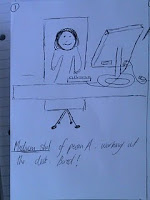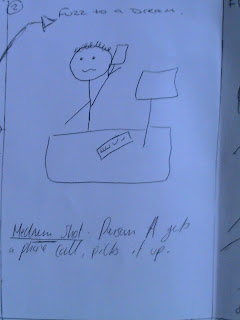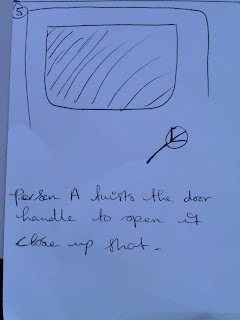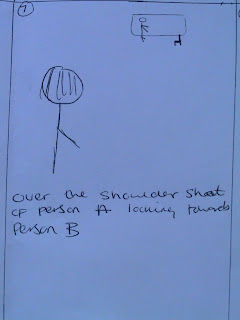SHOT LIST AND SHOOTING SCHEDULE
“Day Dream!”
11:20-12:30pm
1. Meet the actors and briefly explain the plan of the day so they get an idea of what they are going to be doing.
2. Arrive with the actors and directors at Greenwich community college.
3. Setup: camera
Props
12:30-5:00pm
Shots and Scenes!
1. Medium shot of character A at desk looking bored.
2. Medium close up of character A picking up a phone call and then fades of into a dream.
3. Over the shoulder shot + long shot of Person A walking down the corridor
4. Mid shot of person A approaching the door
5. Close up of person A hand as he open the door
6. Long shot of person A walking through the door
7. Over the shoulder shot of person A looking at person B
8. Long shot of person A walking towards person B
9. Close up of person A looking shocked. Person B says “Hello”
10. Point of view shot of person B
11. Mid shot of person A looking nervous. Person B says im pregnant.
12. Over the shoulder shot of person A as person B tells him the she is pregnant
13. Close up of person A screaming “NOOOOOOOOO”
START CLEAN UP
5:00-5:15pm : Thank the actors and the cast, clean up the set and Its a WRAP!!!!!





































